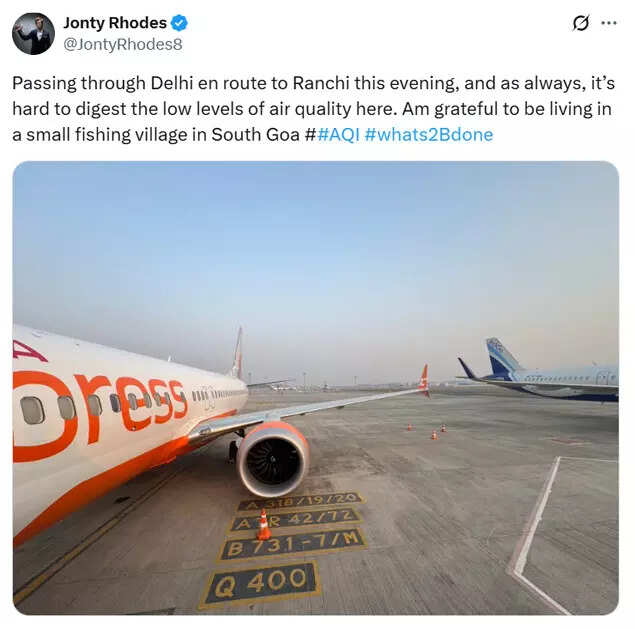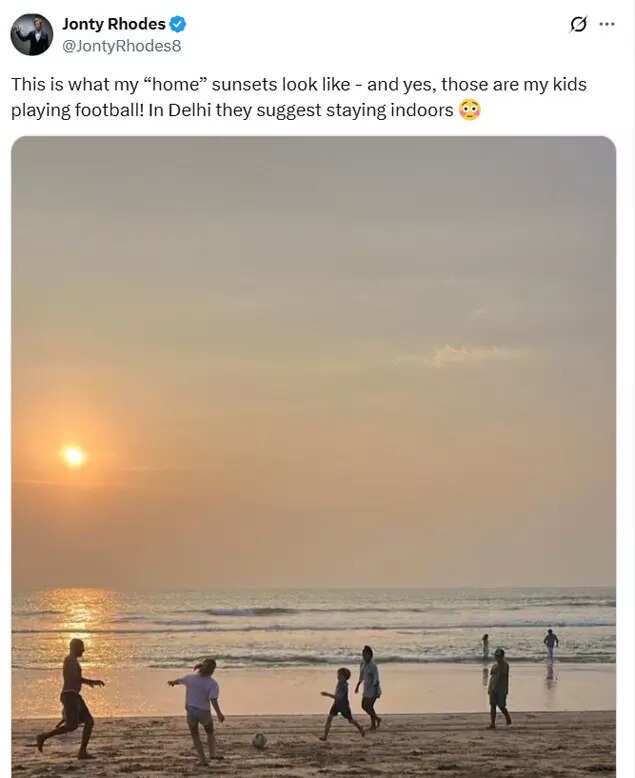NEW DELHI: Former South African cricketer Jonty Rhodes has triggered a wave of reactions on social media after highlighting the alarming rise in Delhi’s Air Quality Index (AQI), which plunged into the ‘severe’ category over the weekend. As thick smog blanketed the national capital, Rhodes — who spends considerable time in India — shared two contrasting images from Delhi and Goa, asking pointed questions about the worsening air conditions during winter.Go Beyond The Boundary with our YouTube channel. SUBSCRIBE NOW!“Passing through Delhi en route to Ranchi this evening, and as always, it’s hard to digest the low levels of air quality here. Am grateful to be living in a small fishing village in South Goa,” Rhodes wrote on X, tagging his post with #AQI and #whats2Bdone.

In another post, the South African great painted a vivid contrast, sharing a picture of a clear Goan sunset with his children playing football outdoors. “This is what my ‘home’ sunsets look like — and yes, those are my kids playing football! In Delhi they suggest staying indoors,” he wrote, drawing attention to how Delhi’s pollution levels are forcing children indoors while his family enjoys clean air in Goa.

Rhodes’ posts struck a chord online, echoing the frustration of Delhi residents who have been battling choking air and smog for days. Several users shared videos showing air purifier filters coated in thick black dust, illustrating the city’s worsening pollution.Meanwhile, the Commission for Air Quality Management (CAQM) said that there was no need yet to invoke Stage III of the Graded Response Action Plan (GRAP) in Delhi-NCR, noting “consistent improvement” in air quality over Sunday evening. The city’s average AQI dropped marginally from 370 to 365 by 5 p.m., though readings in several localities — including Bawana (412) — remained in the severe zone.On Monday morning, Delhiites once again woke up under a grey, toxic haze, coughing and gasping through what has now become an annual crisis. Protests erupted at India Gate, where residents, some wearing masks and holding inhalers, demanded urgent government action against what they called an “air emergency.”



